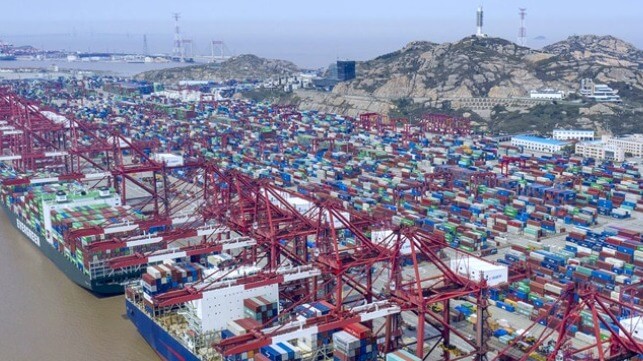Shanghai Ordered into Lockdown Causing Shipping Concerns Worldwide

Shippers and the major carriers were left scrambling to understand the full impact of China’s decision to expand limited COVID-19 restrictions into a citywide lockdown on the 26 million residents of Shanghai, which is also home to the world’s busiest container port. After limited district restrictions, China announced starting today it would be locking down the entire eastern side of the city for five days to embark on a massive testing and screening initiative followed by similar restrictions starting at the end of the week for five days on the western portion of the city.
The announcement said that all businesses except essential services were ordered to close and that people had to stay home. Transport services were stopped across the city with workers told that they must work from home while the testing is ongoing. Factories and warehouses are included with major operations including Tesla reportedly stopping all work. However, city and port officials were quick to clarify that the port would remain open and some factories such as in the semiconductor industry announced that they had been permitted to stay open.
One of the services however caught in the gray area in the restrictions is the trucking industry. Chinese officials insisted that trucks would continue to move cargo. Operators however pointed out that road and district closures were impacting their ability to move cargo and the ports continue to implement strict limits including saying that drivers must present a negative Nucleic Acid Test (NAT) to enter restricted areas, including the ports and terminals.
“The overall landside transportation situation is dynamic, subject to change,” Maersk warned customers in a March 28 update. While noting that trucking service, for now, is still available in China’s main ports and nearby cities, Maersk warns “trucking service in/out Shanghai will be severely impacted by 30 percent due to a full lockdown on Shanghai's Pudong and Puxi areas in turn until April 5. Consequently, there will be longer delivery time and a possible rise in transport costs such as detour fees and highway fees.”
They noted that warehouses are included in this week’s lockdown and suspension of operations. Maersk reported that its employees in Shanghai are working from home but that warehouses in Shenzhen, Ningbo, Xiamen, and Qingdao are operating at this time. However, the terminals at the ports and port of Shanghai itself officially remain open, although they expect growing delays and congestion. At this time, Maersk has not announced any canceled calls or ships diverting to alternate ports.
China’s Global Times quoted port executives saying that the throughput in Shanghai remains at about 140,000 TEU while other ports are also operating normally and recovering from landside restrictions such as those that were imposed earlier in the month in Shenzhen. The Global Times, however, also quoted researchers at the Shanghai International Shipping Institute saying that port efficiency was expected to decline and that the level of congestion “is relatively serious.” They also reported that shipments scheduled to leave for Japan this week were being rescheduled for next week.
Around the globe, shippers were bracing for further disruptions to the global supply chain after it was recovering from the earlier lockdowns in China. Many logistics companies are reporting that they are attempting to reroute shipments away from Shanghai to other ports anticipating that the delays will grow this week and that the lockdowns might be extended beyond the two five-day periods imposed by the government.
The decision to lockdown Shanghai comes after China had said the city was too large and too important to the economy to go into a full shutdown. Some workers, such as people at the stock exchange, had already reported moving into “protected bubbles” staying with co-workers and limiting outside contact to maintain vital businesses.
The shutdown of China’s largest economic hub is the most significant restriction imposed by the government in two years since they locked down Wuhan, where the virus was first detected in late 2019.
